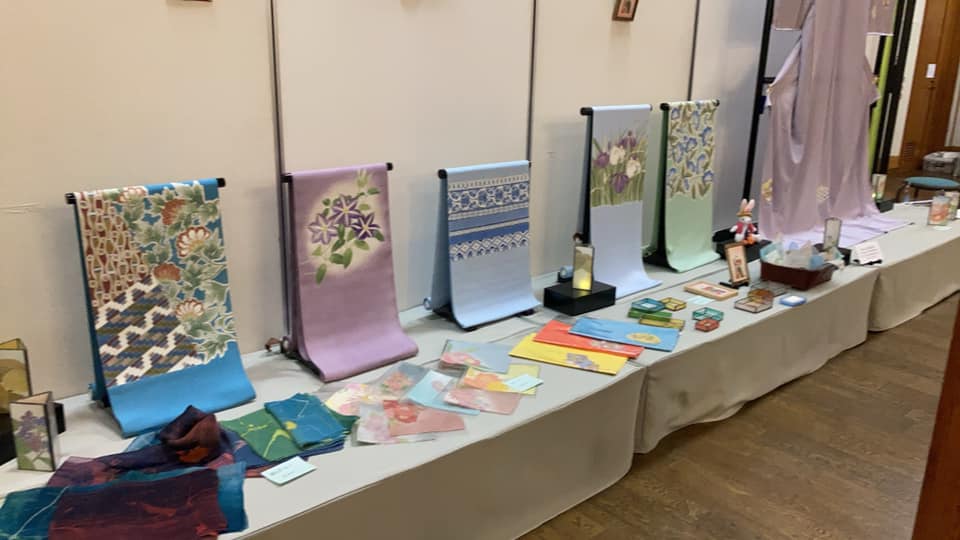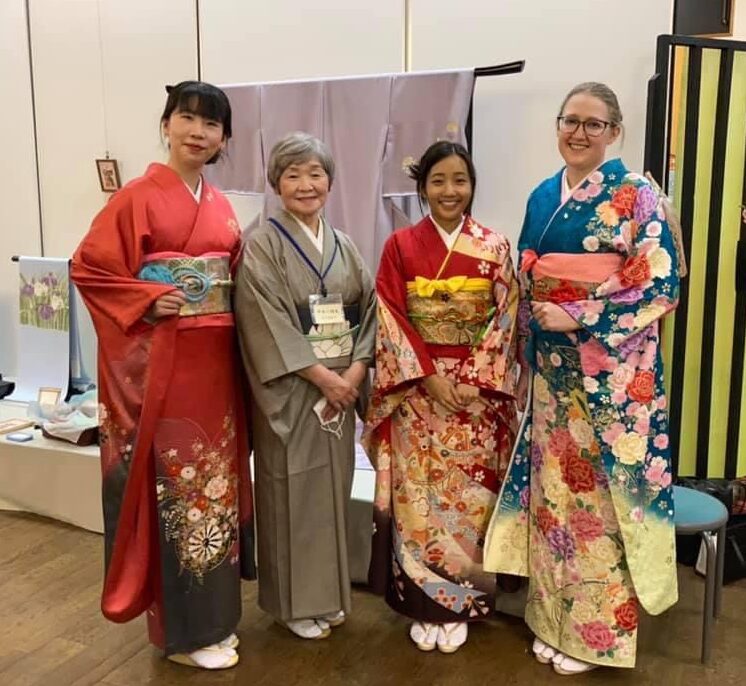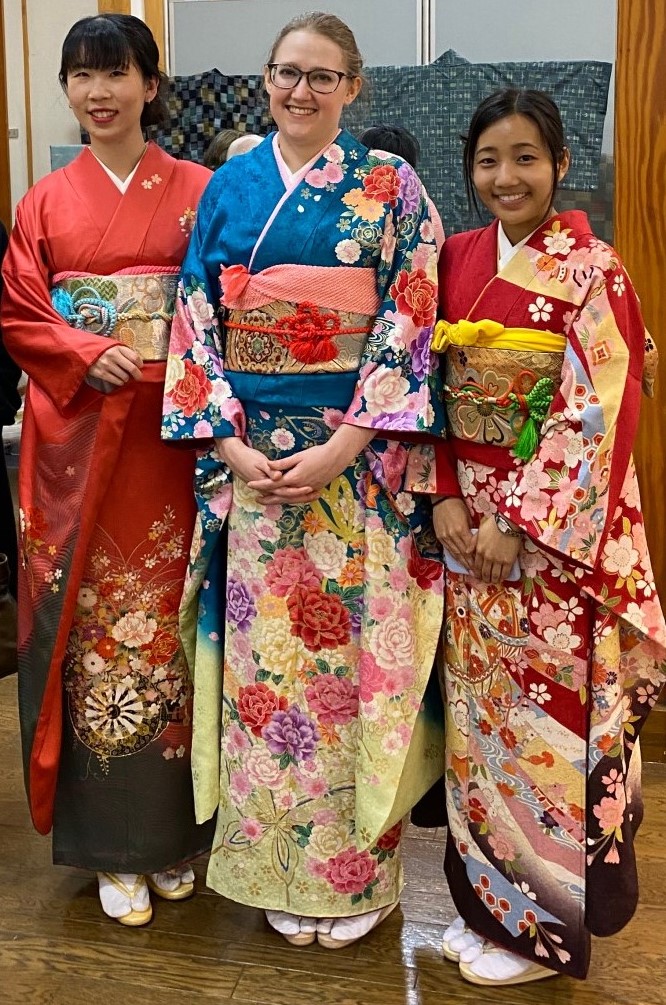Ever since I touched down here in Japan, I had been looking forward to the day that I would have the chance to frolic about in an elegant kimono. These traditional outfits are not only breathtakingly beautiful, but they are also a rich part of Japan’s cultural heritage.
A Little Kimono History
The patterns and styles of kimono vary widely and often coincide with seasons, holidays, and special occasions. Traditionally, different styles of kimono would also depict various stages of the wearers’ lives and even their marital status!
But nowadays, this traditional garment is usually worn at festivals and formal occasions like weddings and ceremonies. For a little more info on Japan’s history of wearing kimono, check out this post by KKday.
Coming of Age Day – 成人の日
One occasion where people often wear kimono is 成人の日 (seijin no hi), or Coming of Age Day, which celebrates those who have turned 20 years old and are officially considered to be adults in Japanese society.
On this day, young women are often seen wearing special, long-sleeved kimono called 振袖, or furisode. Furisode, which translates to “swinging sleeves” in English, are typically worn by unmarried women. These types of kimono have lovely, flowing sleeves that are vibrantly decorated and usually hang all the way down to your ankles!
After going to some festivals and seeing so many people sporting these elegant outfits up close, I began patiently searching for a chance to wear a kimono myself.
A Renowned Kimono Craftswoman: Meeting Tomoko-san
Thankfully, I didn’t have to wait for long for a kimono-wearing opportunity! As luck would have it, I had the pleasure of meeting Tomoko-san, a renowned kimono craftswoman living in my city.
After swapping stories of our travels abroad, Tomoko-san invited me to have tea at her home, where I learned more about her trade and the hard work that goes into making a formal kimono.
Tomoko-san dyes and paints all of the patterns on her silk kimono by hand. From start to finish, she says that it takes about three months to finish one of her creations!
So you might be wondering: how much does one of these gorgeous creations cost? Well, that depends. Kimono prices vary wildly depending on several factors, such as the material, design, dyeing method, and the individual craftsperson.
For example, a cotton yukata usually costs between ¥3,000 to ¥20,000 (~$35 – $230 CAD), whereas a hand-crafted silk kimono can run from ¥50,000 (~$580 CAD) to upwards of ¥1,000,000 (~$11,650 CAD)!
A Fun Painting Session
After telling us a bit more about the painting process, Tomoko-san gave us a short painting tutorial, where she taught us how to paint ajisai (Japanese hydrangeas) onto a handkerchief.
First, she outlined the flower pattern with a special glue made of rice paste that kept the colors from leaking out onto the rest of the fabric. After that, all we had to do was dip our brushes in watercolor paints and decorate the afternoon away.
Once the paint on the cloth dried, the glue was washed away, leaving behind the pretty floral pattern. Painting this little piece of fabric took me about two whole hours, so I can hardly imagine the time and devotion that goes into decorating an entire kimono!
The Nippon Silk Center – 日本絹の里
Now that we had learned a bit more about the art of kimono creation, it was finally time to try wearing them! For this adventure, Jannet, Jodie and I made our way to a silk museum in Takasaki called the Nippon Silk Center, 日本絹の里 (Nippon kinu no sato). When we got there, Tomoko-san and tons of other artists were busy putting their works on display for an annual silk exhibition.

Once we finished checking out the cool displays, we were led upstairs to the dressing room and told to pick out our kimono. There were so many different styles and patterns, so it was hard to choose at first! But a flowery blue furisode soon caught my eye, and off I went to get all dressed up.
Normally, renting a kimono in Japan can cost around ¥6,000 (~$70 CAD) for a regular kimono and upwards of ¥23,000 (~$270 CAD) for furisode, but since we were acting as volunteers in the silk exhibition, we were able to do it for free! (Hurray!)
Getting Dressed Up
Professional kimono dressers who had come from the nearby city of Kiryu were scurrying to and fro, helping everyone put together their ensembles. It’s a good thing the pros were there, because I had no idea what I was getting myself into—literally!
I was surprised by the number and types of pieces that made up the whole outfit.
First, there was the 長襦袢 (nagajuban), a simple white robe that acts as an underlayer. Then, I was actually layered with a few tea towels to help the kimono fit properly.
After tying this first layer in place with a cord called a 腰紐 (koshihimo) and a belt called a 伊達締め (datejime), my dresser put on the colorful, blue furisode and moved on to the next step.
At the waist, I was wrapped in a thick, patterned belt called an 帯 (obi), and the back was tied in a pretty bow style called fukuro obi. The ensemble was completed by a pink sash called an 帯揚げ (obiage) and a red, corded rope called an 帯締め(obijime). These final two pieces came together in the front to form a cute little flower pattern.
The whole dressing process took about 30 minutes. After slipping on some special, white socks called tabi and some golden footwear called zori, we were all dressed up and ready to go!
Wander and Pose
Walking in the kimono definitely took some getting used to. The zori were a little difficult to walk in, but that actually helped us to take it slow and steady. When moving about in a furisode, you have to take very small steps or else the whole getup can come undone.
Once we got the hang of it, all that was left to do was take a crazy amount of pictures and enjoy the experience! So, we wandered happily around the museum, posing for the camera and learning all about the history of silk production in Japan. We even got to watch some cute little silkworms munching away on their mulberry leaves.
Renting Kimono in Japan
The next time you find yourself on this side of the world, I highly recommend trying out a traditional kimono at least once while you’re here. If you’ll be in Japan for a while, start asking around to see if there are any free opportunities to wear kimono in your area. The Nippon Silk Center has their annual silk expedition in early February, so if you’re coming to Gunma, be sure to check it out!
Otherwise, there are plenty of agencies in Tokyo and Kyoto that would be happy to dress you up and set you free to walk around the city for the day!
My friend Jannet had a great experience with the Kiyomizu Higashiyama Shop in Kyoto. They have several plans to choose from, and you can book everything online, so it’s very convenient!
Just Have Fun With It!
With so many different patterns and styles to try, it’s sure to be and fun and interesting experience!


















